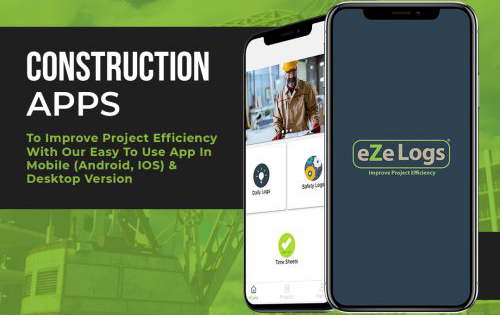On the surface, general-purpose project management platforms offer wide appeal. They’re polished, well-branded, and come with claims of flexibility. But in public infrastructure, the stakes and requirements are fundamentally different. What works for marketing teams and consumer SaaS subscribers breaks down quickly when applied to multi-phase, publicly funded capital programs. And yet, many infrastructure organizations still find themselves locked into generic platforms that slowly bleed time, money, and accountability from the very programs they’re supposed to support.

The root problem isn’t that these platforms lack features—it’s that they lack alignment. Alignment with federal compliance. With stakeholder complexity. With the dynamic between contractors, construction managers, agencies, and auditors. Every misalignment introduces a workaround. Every workaround introduces a risk. And over time, those risks translate into hidden costs.
Workflow Drift: When Software Shapes the Process, Not the Other Way Around
Public infrastructure delivery is not plug-and-play. Approval paths are layered and frequently non-linear. One change order might need to pass through a resident engineer, a CM, a deputy director, legal, procurement, and finance—each with different input types and timeline expectations. Generic platforms offer rigid workflow builders or linear task assignments, but lack the nuance to model this kind of institutional choreography.
As a result, teams resort to manual steps—emailing PDFs for parallel approvals, re-entering data across systems, or waiting for a key stakeholder to log in and “click through” a placeholder task. Each of these detours adds latency and introduces the potential for human error. The longer this goes on, the more the platform acts as a bottleneck rather than an enabler.
Data Fragmentation and the Shadow Spreadsheet Economy
Most generic tools don’t offer robust schema for construction-specific data like contract drawdowns, certified payroll reports, DBE tracking, lien waivers, or inspector daily logs. So teams fill the gap. They maintain parallel spreadsheets, custom Airtable boards, or one-off Google Drive folders just to store project-critical information that can’t be entered into the system of record.
This fragmentation creates a shadow ecosystem. Program managers waste time reconciling data across formats. Contractors send conflicting versions of progress updates. Auditors receive incomplete document trails. And when leadership asks for real-time reporting, staff scramble to assemble dashboards that stitch together five disconnected sources.
Tailored platforms built for public infrastructure account for this from the start. They come with predefined fields, logics, and export standards that map directly to industry requirements. No workarounds. No ghost spreadsheets.
Integration Overhead: The False Promise of “Open APIs”
It’s standard practice for generic platforms to advertise robust API integrations. What they don’t advertise is the developer time, technical onboarding, and version upkeep required to make those APIs usable in a public sector context.
A transportation agency looking to integrate its scheduling data from Primavera P6 into a general-purpose system will quickly discover that the API doesn’t speak P6’s language—at least not in a way that maintains logic fidelity. S-curves, float paths, and WBS hierarchies get flattened or lost entirely. Worse, the API may be undocumented or rate-limited, which forces the agency to pay for middleware or third-party consultants just to maintain a fragile integration.
Tailored software, by contrast, is often built with native support for tools like P6, Bentley iTwin, Esri, or even legacy document control systems. This reduces integration overhead and ensures that data retains its original context when flowing between systems.
Security Compliance Isn’t Optional—But Generic Platforms Treat It Like a Checkbox
SOC 2 Type II. CJIS. FISMA Moderate. FedRAMP. For generic platforms, these are expensive afterthoughts or marketing claims. For public infrastructure organizations handling regulated data, they are operational requirements.
When a platform cannot natively support role-based access control, immutable audit logs, data residency compliance, or secure external sharing with contractors, IT teams are forced to bolt on solutions. This patchwork exposes the organization to legal and reputational risk. In some cases, it can even jeopardize federal funding.
Tailored platforms are often developed with these frameworks embedded from day one. They log every user action down to the field level. They enforce access policies that match organizational hierarchies. And they provide compliance exports designed specifically for oversight bodies and regulators.
Training Costs Disguised as User Flexibility
Generic platforms often pride themselves on being “self-service.” But in public infrastructure organizations, where users include not just office staff but inspectors, trade contractors, and consultants, this flexibility turns into confusion. The interface isn’t purpose-built. The terminology doesn’t match the industry. Critical functions get buried under layers of configuration.
Training becomes an ongoing burden. New hires require custom onboarding decks. Project teams have to build internal playbooks just to teach people how to enter data correctly. Over time, this erodes adoption. Some users stick with email. Others misuse the platform. Consistency falls apart, and leadership loses visibility into the true state of the program.
With tailored software, workflows and interface elements mirror the actual work being done. Inspectors see inspection tools. Contract admins see contract log tools. Field teams don’t need to guess where to upload site photos or flag a delay. Training becomes faster, usage becomes more consistent, and data quality improves.
Missed Opportunity Costs: Data That Can’t Drive Decisions
Perhaps the most insidious cost of generic platforms is what they prevent. Capital programs are increasingly data-driven. Agencies want predictive insights—forecasting contractor risk, identifying permitting bottlenecks, optimizing schedule phasing.
Generic tools lack the industry specificity to offer this. They collect tasks, not trends. They track uploads, not contextual milestones. Tailored platforms, however, are designed to extract signals from construction-specific data. They can analyze submittal aging by trade, change order velocity by funding source, or claims history by vendor.
Without these insights, organizations miss opportunities to proactively manage risk, shorten delivery timelines, or optimize resource allocation. These aren’t soft losses. They manifest as schedule overruns, budget creep, and missed grant windows.
Also Read:
Safety First: Enhancing Toolbox Talks with AI-Powered Safety Management in Ezelogs
Smart HR for Construction: Boosting Payroll Efficiency with Ezelogs’ AI-Enabled HRM Tools
Compliance Made Easy: How AI-Enabled Certified Payroll in Ezelogs Simplifies Regulatory Reporting
Centralizing Your Data: The Power of Ezelogs’ Product Data Sheet Library for Faster Submittals
Voice-Activated Efficiency: Transforming Construction Management with Ezelogs’


